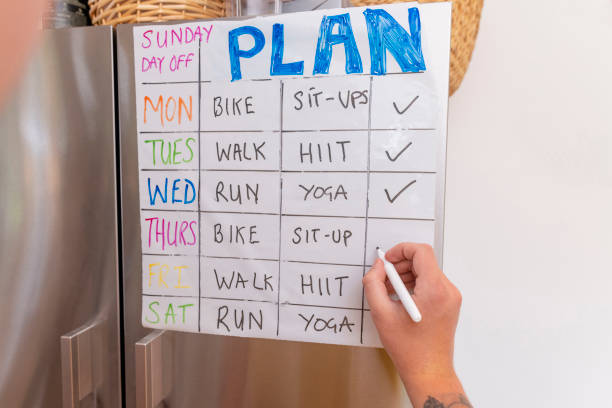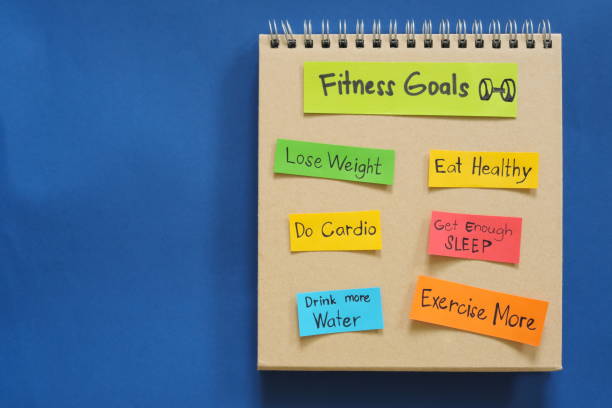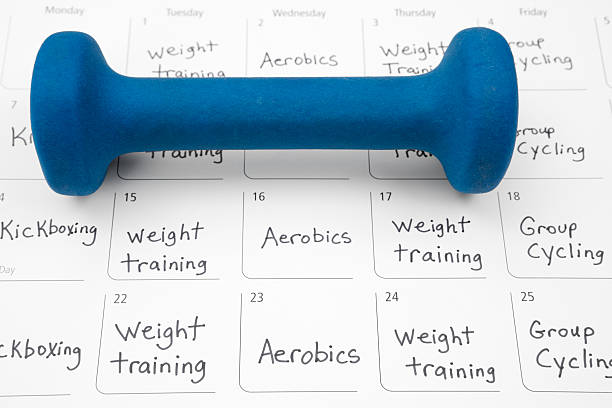Creating an effective workout schedule can be a game-changer for your fitness journey. A well-structured workout plan helps you stay organized, motivated, and on track to achieve your health goals. This guide will walk you through the steps to create a personalized workout schedule that fits your lifestyle and maximizes your results.
1. Assess Your Fitness Goals

Before you start creating your workout schedule, it’s essential to assess your fitness goals. Ask yourself what you want to achieve with your workouts. Common fitness goals include:
- Weight loss: Aim to burn more calories than you consume through a combination of cardio and strength training.
- Muscle building: Focus on strength training exercises that target different muscle groups.
- Improving endurance: Incorporate more cardiovascular activities into your routine.
- Enhancing flexibility: Include stretching and yoga exercises.
- General fitness: Combine a mix of cardio, strength training, and flexibility exercises.
2. Determine Your Current Fitness Level

Understanding your current fitness level is crucial for creating a realistic and safe workout schedule. Consider factors such as:
- Physical limitations: Any injuries or conditions that may affect your ability to perform certain exercises.
- Experience level: Whether you are a beginner, intermediate, or advanced exerciser.
- Available time: How much time you can realistically dedicate to working out each week.
3. Choose Your Workout Frequency

Decide how many days a week you want to work out. The American College of Sports Medicine recommends at least 150 minutes of moderate-intensity exercise or 75 minutes of vigorous-intensity exercise per week, along with muscle-strengthening activities on two or more days a week.
- Beginners: Start with 3-4 days of exercise per week.
- Intermediate: Aim for 4-5 days per week.
- Advanced: Consider 5-6 days per week.
4. Plan Your Workout Types

A balanced workout schedule should include a mix of cardio, strength training, and flexibility exercises. Here’s a basic structure to follow:
- Cardio: Activities like running, cycling, swimming, or dancing. Aim for at least 150 minutes of moderate-intensity or 75 minutes of vigorous-intensity cardio per week.
- Strength Training: Exercises like weight lifting, bodyweight exercises, or resistance band workouts. Target all major muscle groups at least twice a week.
- Flexibility: Stretching exercises or yoga to improve flexibility and prevent injuries. Include these at least 2-3 times a week.
5. Schedule Your Workouts

Now that you have a clear understanding of your goals, fitness level, and workout types, it’s time to schedule your workouts. Here’s a sample weekly schedule:
- Monday: Cardio (30 minutes) + Strength Training (Upper Body)
- Tuesday: Cardio (30 minutes) + Flexibility (15 minutes)
- Wednesday: Strength Training (Lower Body)
- Thursday: Cardio (30 minutes) + Flexibility (15 minutes)
- Friday: Strength Training (Full Body)
- Saturday: Active Rest (Light activity like walking or yoga)
- Sunday: Rest Day
6. Monitor and Adjust Your Schedule

It’s important to monitor your progress and adjust your workout schedule as needed. Keep track of your workouts in a journal or app, noting what you did, how you felt, and any improvements or challenges you encountered. Adjust your schedule based on your progress and feedback from your body.
- Progression: Gradually increase the intensity, duration, or frequency of your workouts to continue making progress.
- Recovery: Ensure you’re getting enough rest and recovery, especially if you feel fatigued or notice signs of overtraining.
- Variety: Mix up your workouts to keep them interesting and prevent plateaus.
7. Incorporate Rest and Recovery

Rest and recovery are crucial components of any workout schedule. They allow your body to repair and grow stronger, reducing the risk of injury and burnout. Make sure to include:
- Rest Days: At least one full rest day per week.
- Active Recovery: Low-intensity activities like walking or gentle yoga on rest days.
- Sleep: Aim for 7-9 hours of quality sleep per night to support recovery and overall health.
8. Stay Motivated and Consistent

Staying motivated and consistent with your workout schedule can be challenging, but these tips can help:
- Set Short-Term Goals: Break down your long-term goals into smaller, achievable milestones.
- Find a Workout Buddy: Exercising with a friend can make workouts more enjoyable and keep you accountable.
- Track Your Progress: Use a fitness journal or app to record your workouts and track your progress.
- Reward Yourself: Celebrate your achievements with non-food rewards, such as new workout gear or a relaxing massage.
9. Listen to Your Body

Lastly, always listen to your body. If you experience pain, excessive fatigue, or other signs of overtraining, take a step back and allow yourself time to recover. It’s better to take a short break than to risk injury and derail your progress.
Conclusion
How to create a workout schedule is a powerful tool to help you stay organized, motivated, and on track with your fitness goals. By assessing your goals, determining your fitness level, planning a balanced mix of workouts, and staying consistent, you can achieve long-term success and enjoy the journey to a healthier, fitter you. Remember to listen to your body, adjust your schedule as needed, and most importantly, have fun with your workouts.
Frequently Asked Questions (FAQ)
1. How long should my workouts be?
The duration of your workouts depends on your fitness goals and available time. Generally, aim for at least 30 minutes of moderate-intensity exercise most days of the week. This can include a mix of cardio, strength training, and flexibility exercises.
2. Can I work out every day?
While it’s possible to work out every day, it’s important to include variety and ensure proper recovery. Alternate between different types of workouts (cardio, strength, flexibility) and include at least one full rest day each week.
3. How do I know if I’m overtraining?
Signs of overtraining include persistent fatigue, decreased performance, prolonged muscle soreness, and increased susceptibility to injuries or illness. If you notice these signs, consider reducing workout intensity or taking extra rest days.
4. What’s the best time of day to work out?
The best time to work out is when you feel most energetic and can be consistent. Some people prefer morning workouts to start their day, while others find evening workouts more convenient. Choose a time that fits your schedule and helps you stay consistent.
5. How do I stay motivated to work out?
Staying motivated can be challenging, but setting specific, achievable goals, tracking your progress, and finding a workout buddy can help. Also, varying your routine and rewarding yourself for milestones can keep you engaged.





